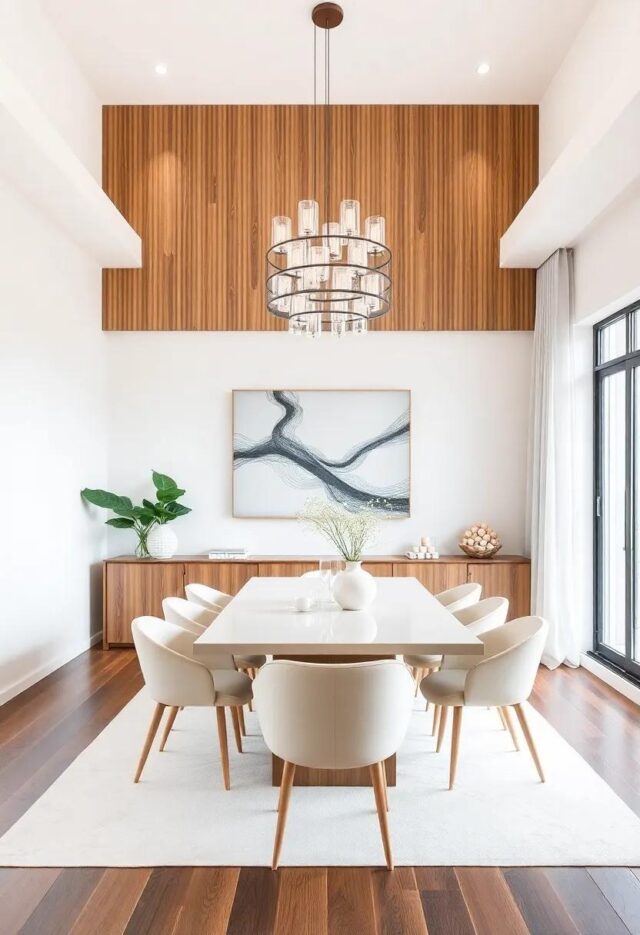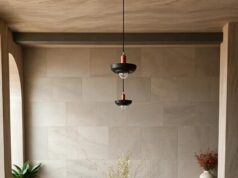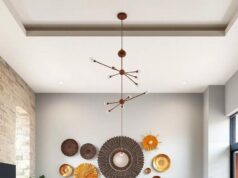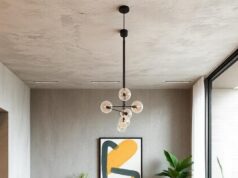In the ever-evolving landscape of home design, dining rooms have transformed into more than just spaces to share meals; thay embody the heart of contemporary living. The concept of modern elegance transcends mere aesthetics, weaving together creativity, functionality, and personal expression. In this guide, we embark on a journey thru the diverse styles that define today’s dining rooms, from minimalist chic to bold eclecticism, each reflecting the nuances of modern life. Whether you’re looking to refresh an existing space or embark on a complete redesign, discover how to infuse sophistication and style into your dining area, creating an inviting atmosphere that resonates with the essence of contemporary elegance. Join us as we explore the elements, trends, and inspirations that will elevate your dining experience to new heights.
Exploring Minimalism: The Beauty of Clean Lines and Open Spaces in Modern Dining Rooms
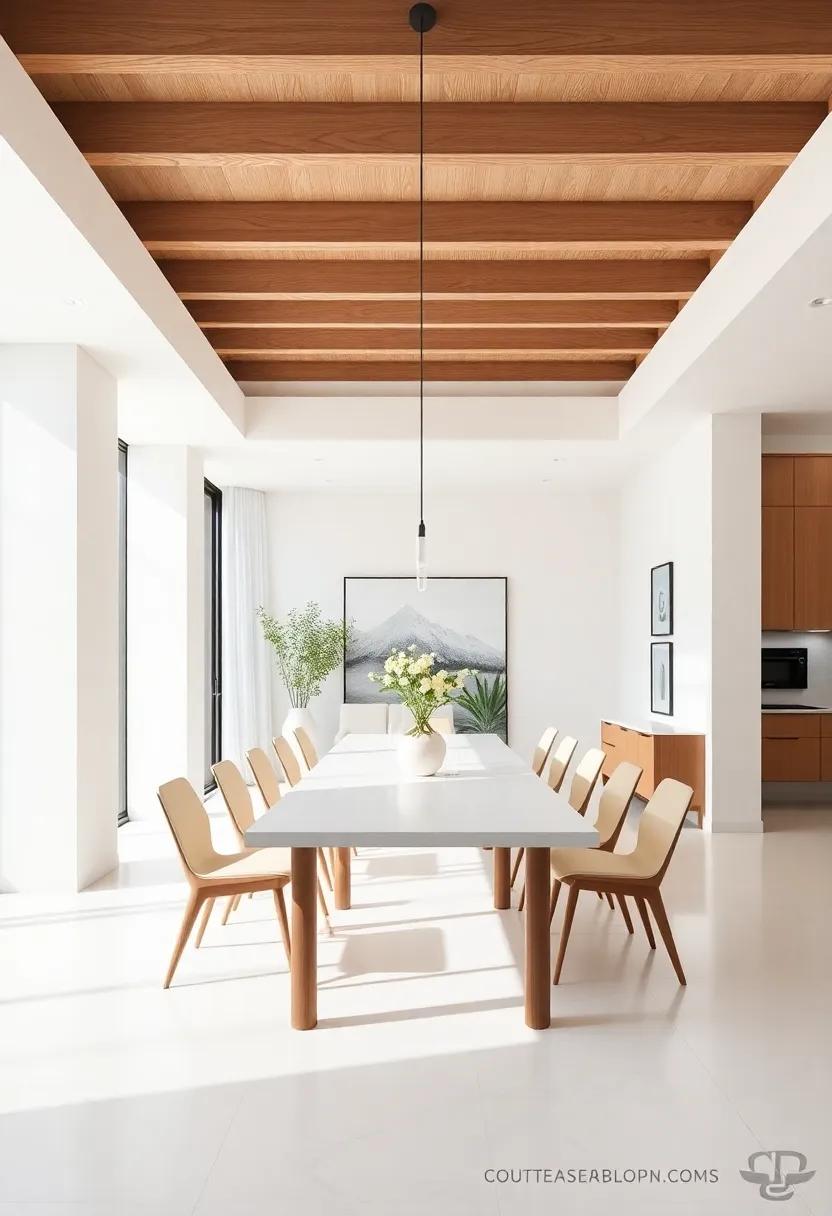
in the realm of contemporary dining spaces, minimalism reigns supreme, beckoning us to embrace simplicity and functionality.The allure lies in clean lines that define the contours of furniture and the overall layout,allowing each piece to breathe within the space. When focusing on open areas, the dynamics of light play a vital role, highlighting textures and materials that might or else go unnoticed. By utilizing color palettes that lean towards neutrals and earth tones, the visual clutter decreases, creating an atmosphere ripe for intimacy and conversation. This aesthetic fosters a sense of calm, making it the perfect backdrop for memorable gatherings.
The choice of materials enhances the minimalist approach, with natural woods, metals, and glass often taking center stage.To illustrate this refined look, here are some essential elements commonly found in modern dining rooms:
- Sleek Dining Tables: Frequently enough rectangular or round, crafted from solid wood or glass for a refined appeal.
- Simple Seating: Chairs and benches with clean silhouettes, upholstered in muted fabrics to complement the overall theme.
- Functional Lighting: Pendant lamps or chandeliers with understated designs that provide both elegance and illumination.
- Decorative Accents: Select decorative pieces like vases or art that emphasize the space without overwhelming it.
Inviting Warmth: Incorporating Natural Textures and Earthy Tones into Your Dining Space
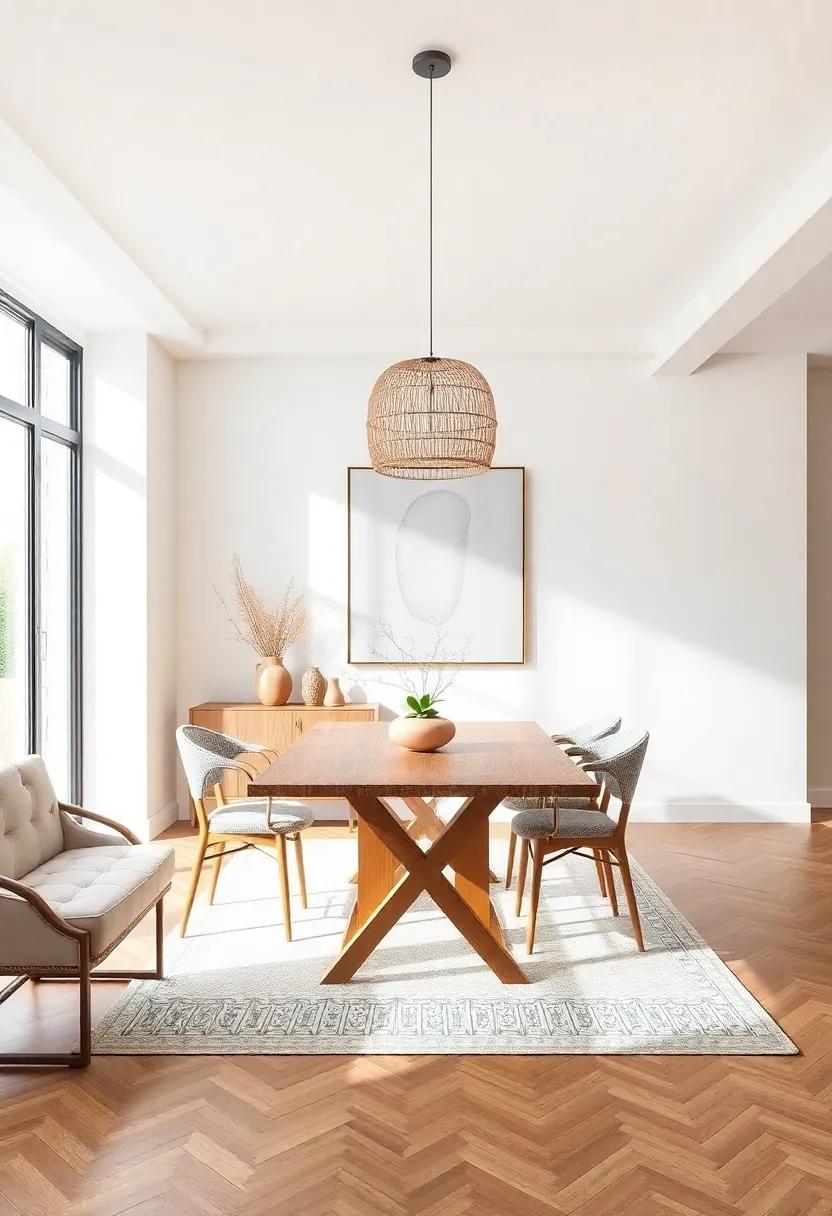
To create an inviting atmosphere in your dining area, embrace natural textures that evoke a sense of warmth and connection with nature.Consider incorporating materials such as wood, stone, and linen for a harmonious blend of organic elements. These materials can be introduced in various ways:
- Furniture: Opt for a rustic wooden dining table paired with pleasant linen chairs.
- Textiles: Layer your table setting with linen tablecloths and cotton napkins to add depth.
- Decor: Use ceramic or terracotta dinnerware that highlights earthy tones and enhances the overall aesthetic.
Color plays a crucial role in achieving a grounded look. Earthy hues such as terracotta, moss green, warm beige, and deep browns can infuse your dining space with tranquility. When choosing your color palette, opt for combinations that complement the natural textures present:
| Color | Suggested Combinations |
|---|---|
| Terracotta | Pair with cream and sage green |
| Moss Green | Complement with deep tan and soft gray |
| Warm Beige | Accentuate with burnt orange and muted blues |
These colors and materials create a cohesive look that invites warmth and comfort, fostering an environment perfect for family gatherings or intimate dinners.
Chic Color Palettes: Selecting the Perfect Hues for a Contemporary Dining Room Ambiance
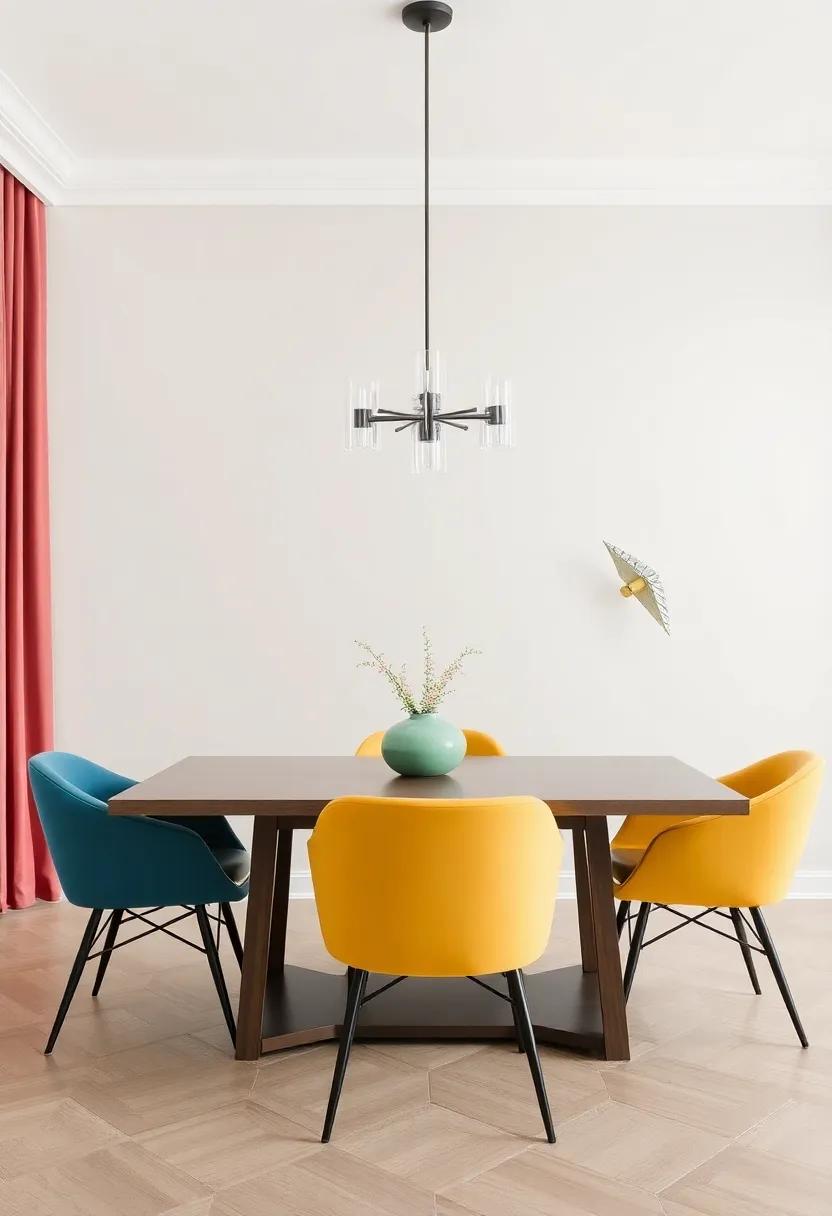
Choosing the right color palette is essential for establishing a sophisticated atmosphere in a contemporary dining room. Consider using a combination of neutral tones and subtle accents to create a balanced look. Shades like soft grays, warm creams, and muted taupes can serve as a perfect canvas, while splashes of deep navy, forest green, or rich burgundy as accent colors can elevate the space and create visual interest. Incorporating metallics, such as brushed gold or silver, in decorative elements can also harmonize beautifully with the primary hues, adding a touch of elegance and modernity.
To help narrow down your options, here’s an inspiring selection of chic color combinations that fit seamlessly into a contemporary dining space:
| Palette Name | Primary Colors | accent Colors |
|---|---|---|
| Urban Oasis | Soft Grey, Crisp White | Teal, Charcoal |
| Warm Earth | Beige, Terracotta | Deep Olive, Rust |
| Modern Monochrome | Slate, Ivory | Jet Black, Silver |
| Subdued pastels | Pale Blush, Mint | Soft Gold, Cream |
By thoughtfully selecting your dining room’s color palette, you can influence the mood and functionality of the space. Aim for colors that complement each other while aligning with your personal aesthetic. Whether you opt for a bold statement or a delicate whisper, the chosen hues will undoubtedly shape your dining experience, making it one that resonates with contemporary elegance.
Statement Furniture: choosing the Right Dining Table as the Focal Point of Elegant Dining
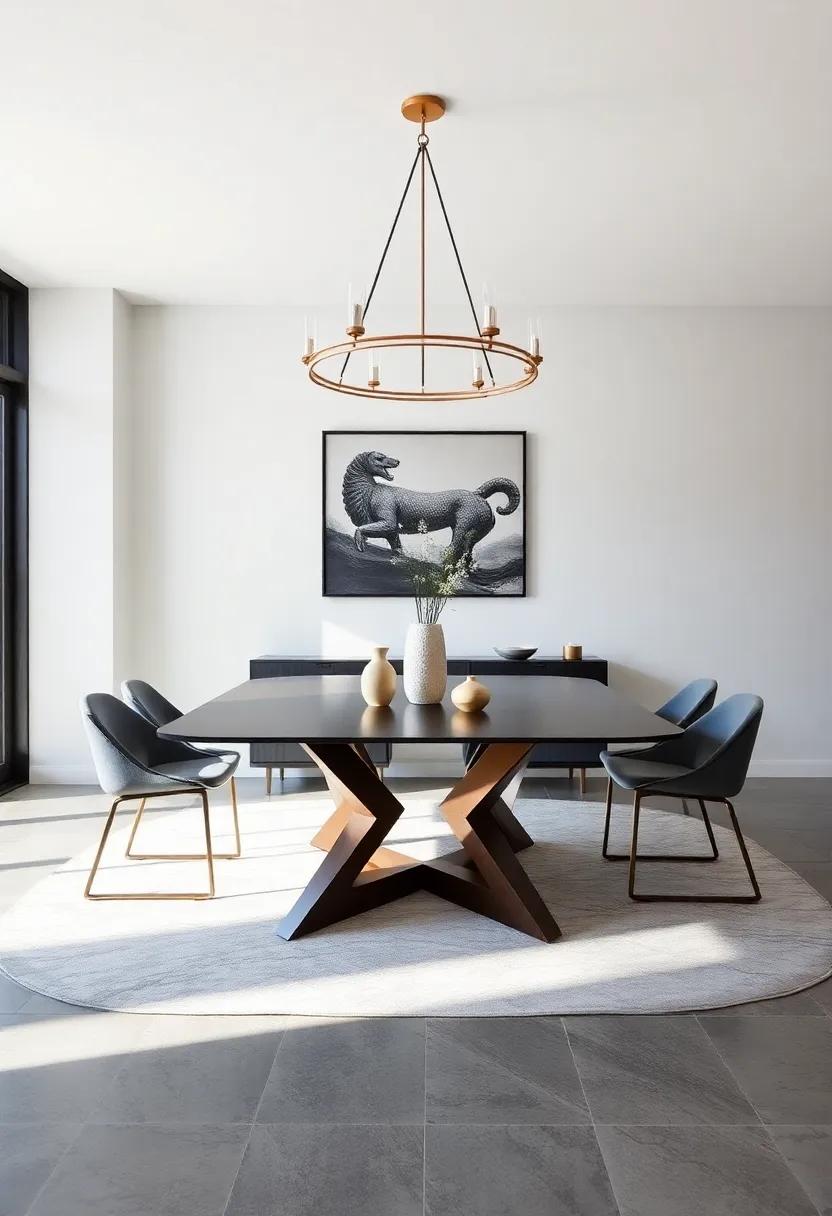
Choosing the perfect dining table is not merely about function; it’s about capturing the essence of your dining space. An elegantly designed table can instantly transform an ordinary room into an unusual space, becoming the centerpiece that draws the eye.When selecting a dining table, consider aspects like shape, size, and material, as each contributes to the overall atmosphere. Here are some essential elements to keep in mind:
- Shape: Rectangular tables can accommodate more guests,while round tables foster intimacy.
- Material: Wood imparts warmth, glass adds sophistication, and metal enhances a modern aesthetic.
- Size: Ensure that your table fits comfortably in the space, allowing for movement and accessibility.
Furthermore,the style of your dining table should resonate with your overall interior design. Modern elegance frequently enough combines clean lines with luxurious finishes. Incorporating elements like statement bases or unique textures can elevate the design. below is a simple guide to help you categorize dining tables that enhance contemporary dining rooms:
| Style | Key Features | Ideal Material |
|---|---|---|
| Minimalist | simple forms, functionality | Wood, Metal |
| Industrial | Raw finishes, bold structure | Reclaimed wood, Steel |
| Scandinavian | Light colors, practical charm | Pine, Birch |
Artful Accessories: enhancing Your Dining Room with Unique Decor and Centerpieces
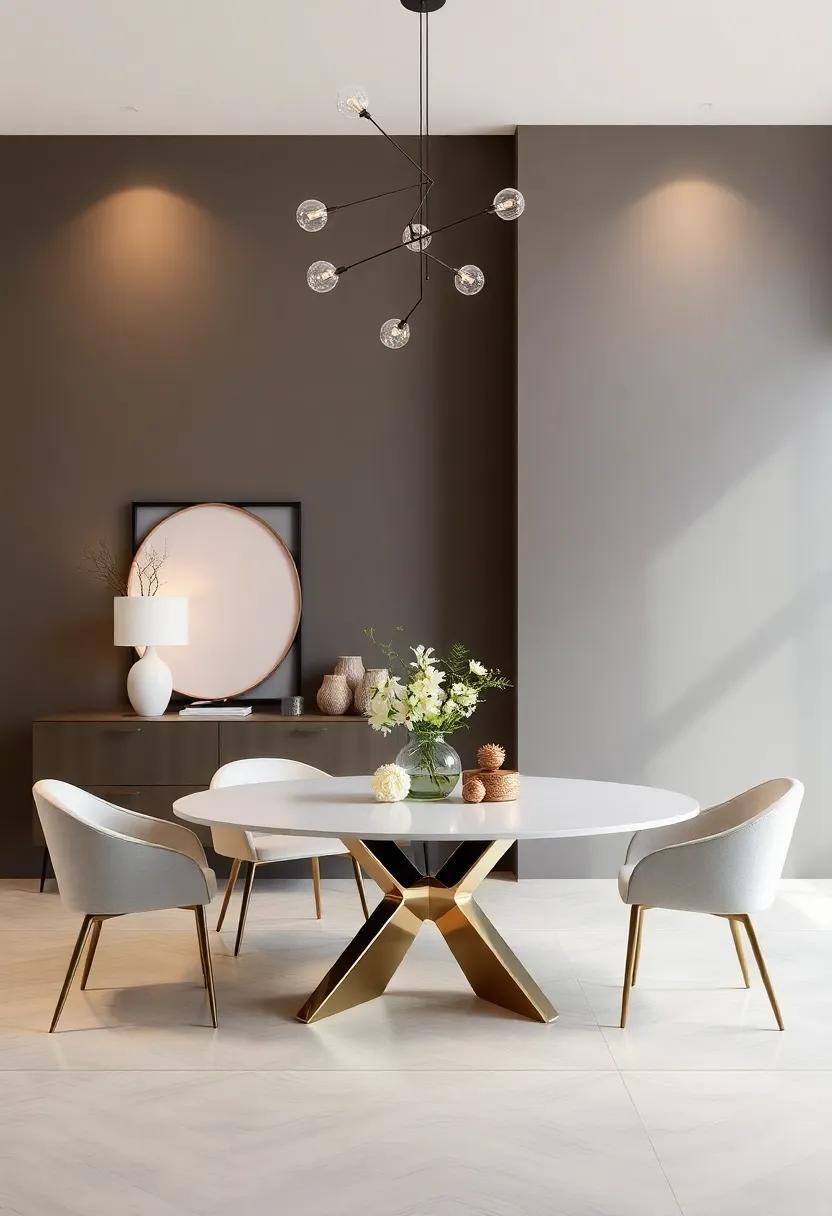
Elevate your dining experience with a selection of carefully curated accessories that embody both function and style. Consider incorporating statement centerpieces that draw the eye and spark conversation. Whether it’s a sculptural vase filled with fresh flowers or a minimalist bowl showcasing seasonal fruits,these elements can weave a narrative into your dining space. Complementary accents, such as handcrafted placemats and uniquely designed coasters, can further enhance the ambiance while serving a practical purpose.By thoughtfully selecting these pieces,you can create a cohesive look that resonates with the modern elegance of your dining area.
Textures play a pivotal role in transforming a room, so explore a variety of materials to add depth to your decor. Consider mixing metallic accents with soft fabrics,introducing contrasting elements that evoke interest. Some ideas include:
- Artisanal ceramic dishware to create a handmade feel.
- Glass or crystal candlesticks to illuminate your table settings.
- Stylish napkin rings to tie together your table linens.
Additionally, you can display a rotating selection of art pieces or decorative objects on open shelving or a statement cabinet to keep the aesthetic fresh and dynamic. A carefully arranged gallery wall featuring unique artworks can serve as a stunning backdrop, ensuring that your dining area is as visually appealing as it is functional.
lighting Magic: The Role of ambient and Accent Lighting in Modern Dining Room Design
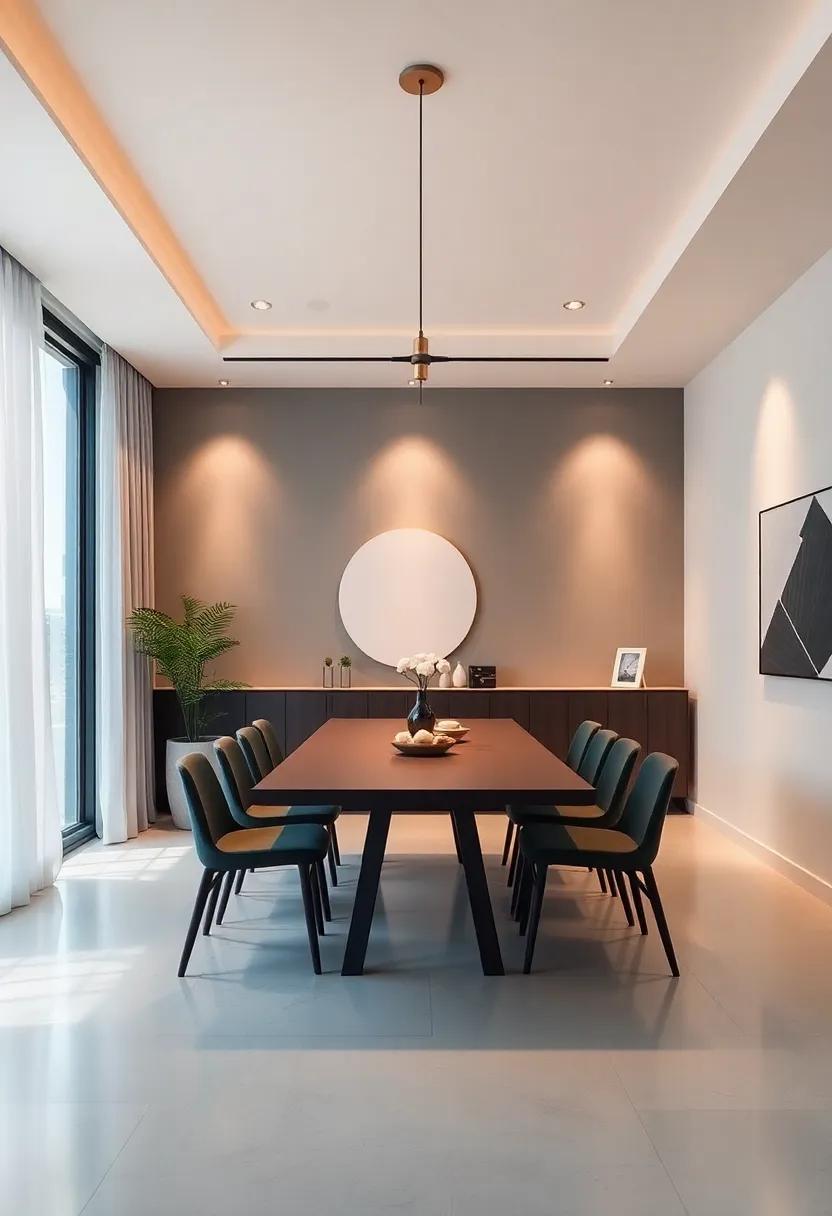
Lighting is a crucial element in setting the tone of a dining room, transforming the space and influencing the dining experience. Ambient lighting serves as the foundation, providing overall illumination that ushers warmth and comfort into the room. This can be achieved through a variety of fixtures such as chandeliers, pendant lights, or even subtle recessed lighting set into the ceilings. Each of these sources contributes to creating a welcoming atmosphere where families and friends can gather and enjoy meals together, while enhancing the aesthetic appeal of modern design.
In contrast, accent lighting adds a layer of sophistication that highlights specific features within the dining area. this can include stylish wall sconces, spotlights focused on artwork, or decorative table lamps that draw attention to key elements of the decor. The interplay between ambient and accent lighting allows for an engaging visual experience, as it encourages diners to explore the nuances of the space. To achieve a perfect balance, consider the following:
- Layering Lighting: Combine different light sources for a versatile ambiance.
- Adjustable Fixtures: use dimmers to modify brightness based on the occasion.
- Color Temperature: Opt for warm light to create a cozy dining environment.
The Versatility of Multi-Functional Dining Areas in Today’s Homes
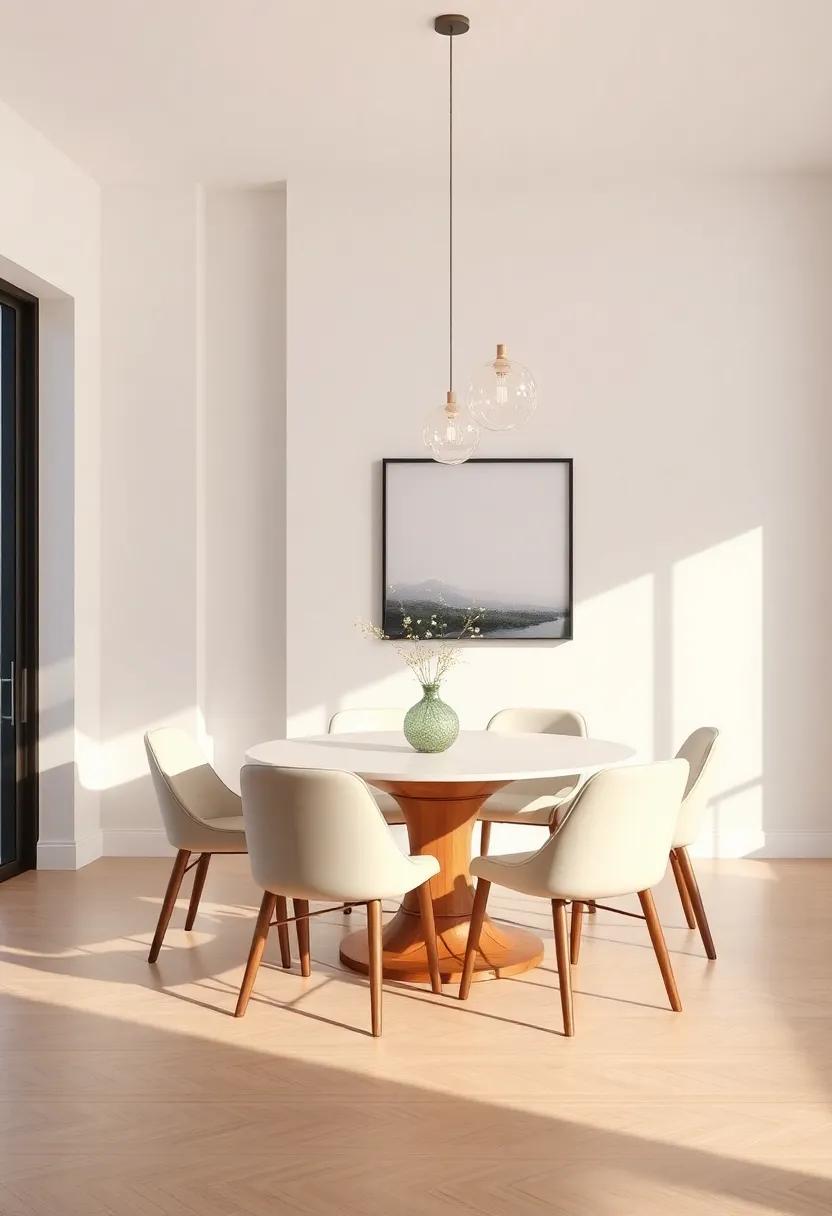
The modern home has evolved to embrace versatility as a key attribute, particularly in the design of dining areas. These spaces are no longer confined to formal meals but instead serve multiple purposes that cater to the dynamic lifestyle of today’s families. A dining room can seamlessly transition from a cozy family dinner venue to an efficient workspace or a vibrant social hub for gatherings with friends. This transformation highlights the importance of flexible furniture arrangements,such as extendable tables or stackable chairs,which enhance usability without sacrificing style.
Incorporating elements like multi-functional storage solutions and adaptable lighting can further elevate the functionality of a dining area. As a notable example, integrated shelving can hold dinnerware and also act as a display for art or plants, while dimmable fixtures allow for a change in atmosphere with just a flick of a switch. To illustrate these concepts, consider the following table that lists popular features of versatile dining areas:
| Feature | Description |
|---|---|
| Extendable Tables | Perfect for accommodating guests during special occasions. |
| Modular Seating | Allows for reconfiguration based on the number of guests. |
| Integrated Storage | Maximizes space while keeping essentials within easy reach. |
| Smart Systems | Enhances connectivity for work or entertainment. |
Timeless Materials: Merging Glass, Metal, and Wood for a Seamless Contemporary Look
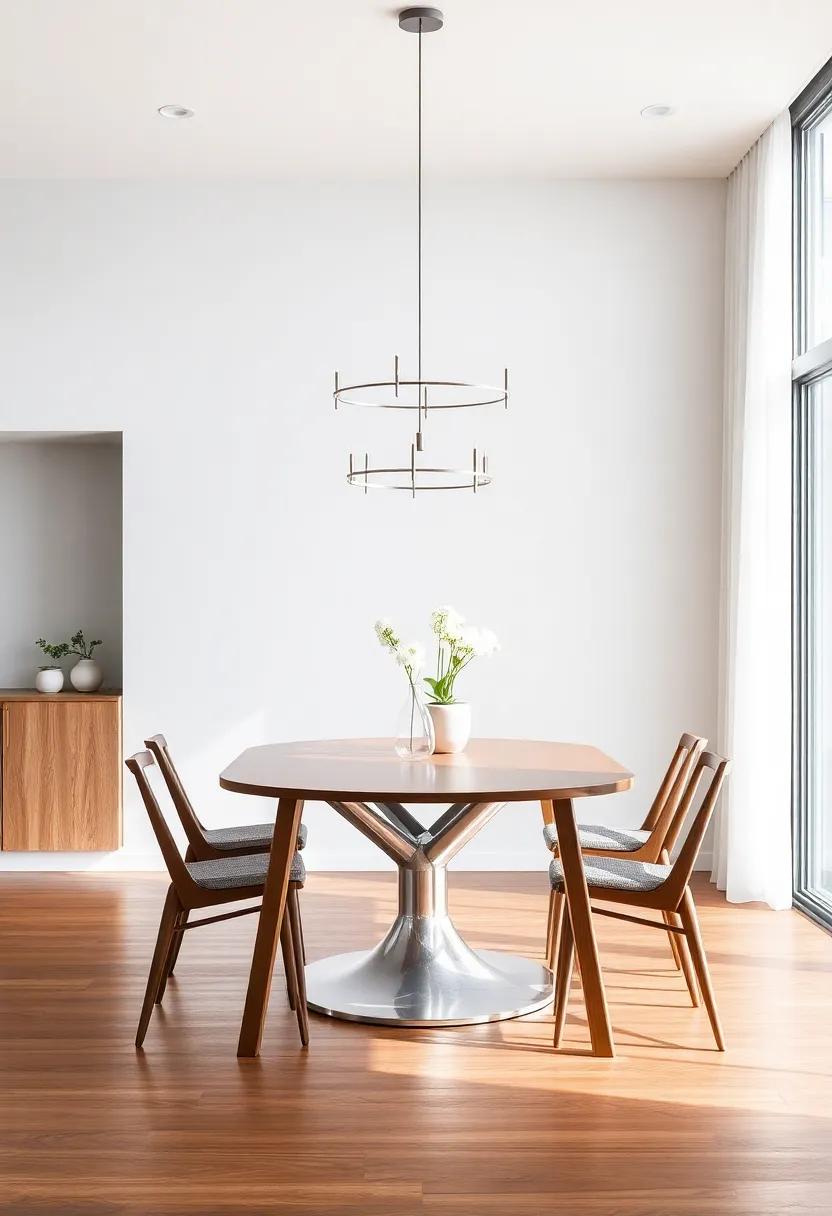
In contemporary dining rooms, the harmonious blend of glass, metal, and wood creates a stunning visual appeal that resonates with modern elegance. The openness of glass brings an airy quality, allowing light to filter and reflect throughout the space. Metal accents introduce a bold contrast, offering a sleek, industrial feel that grounds the design. Meanwhile, the warmth of wood adds an inviting touch, balancing the cool textures of glass and metal. Together, these materials foster a cohesive look that is both chic and functional, perfect for hosting gatherings or intimate meals.
To achieve a seamless contemporary aesthetic, consider incorporating key elements such as:
- Glass dining tables with sculptural bases
- Metal light fixtures that serve as statement pieces
- Wooden chairs that complement the table while adding warmth
These elements can be further enhanced by selecting a muted color palette to maintain a sophisticated ambiance. For those seeking a minimalist yet inviting dining area, the combination of these materials not only elevates the design but also reflects a timeless elegance that endures through changing trends.
Eclectic Elegance: Blending Different Styles for a Personalized Dining Experience
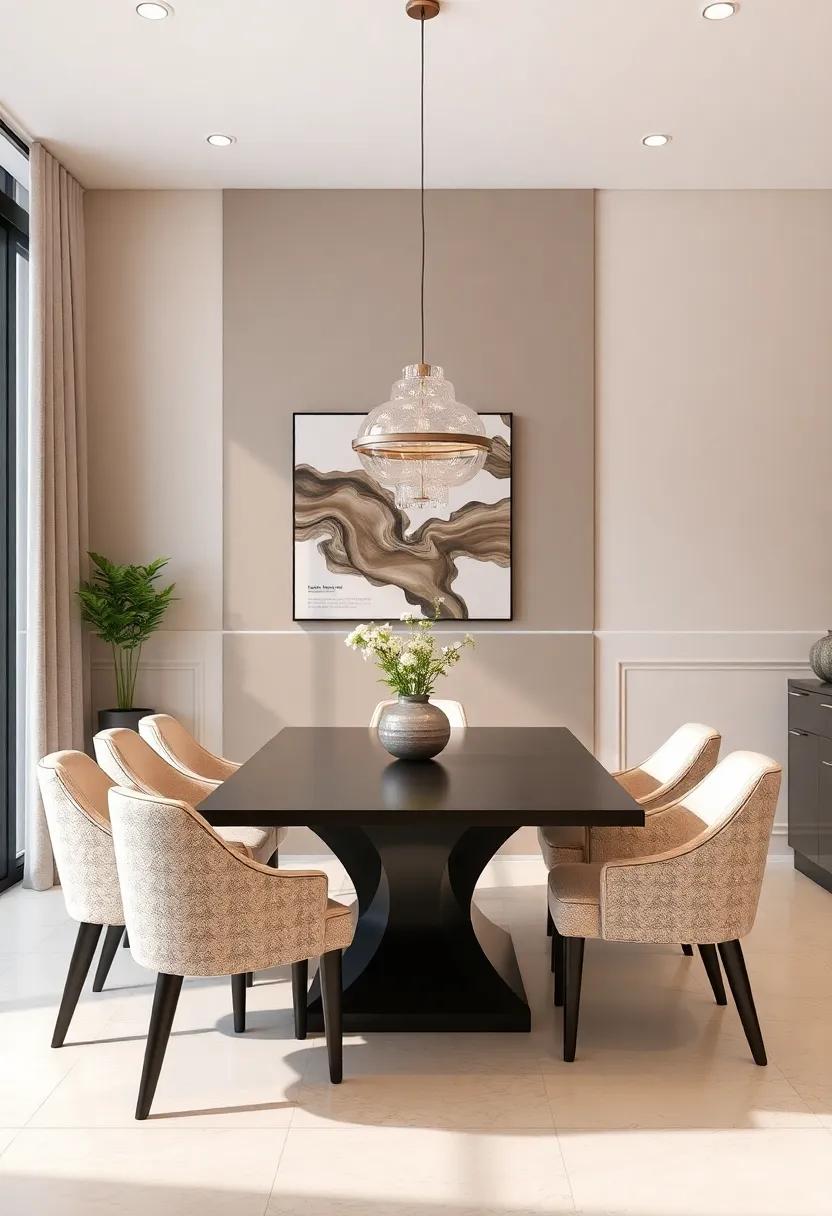
Creating an ambiance that feels uniquely yours is an exciting opportunity to express your personal style through a collage of various influences. Imagine a dining space adorned with a variety of textures, colors, and pieces that invite conversation and set the scene for memorable meals. Consider mixing mid-century modern chairs with a vintage farmhouse table, or incorporating a bohemian rug beneath a sleek, contemporary glass table. The key is to find a harmonious balance, allowing each element to complement its neighbors while standing out in its own right.
To achieve a truly eclectic dining experience, you can curate your decor with these essential elements in mind:
- color Palettes: Opt for a blend of complementary hues that work well together, like soft earth tones combined with bold jewel tones.
- Unique Lighting: Choose statement lighting fixtures, such as a contemporary chandelier paired with vintage sconces, to create contrast and intrigue.
- Textural variety: layer different materials, like polished wood, distressed metal, and plush textiles, to bring depth to the space.
By thoughtfully curating your dining area with these guidelines,you can fashion a space that reflects your taste and feels effortlessly welcoming.
Cohesive Design: Creating Harmony Between Dining Spaces and Adjacent Areas
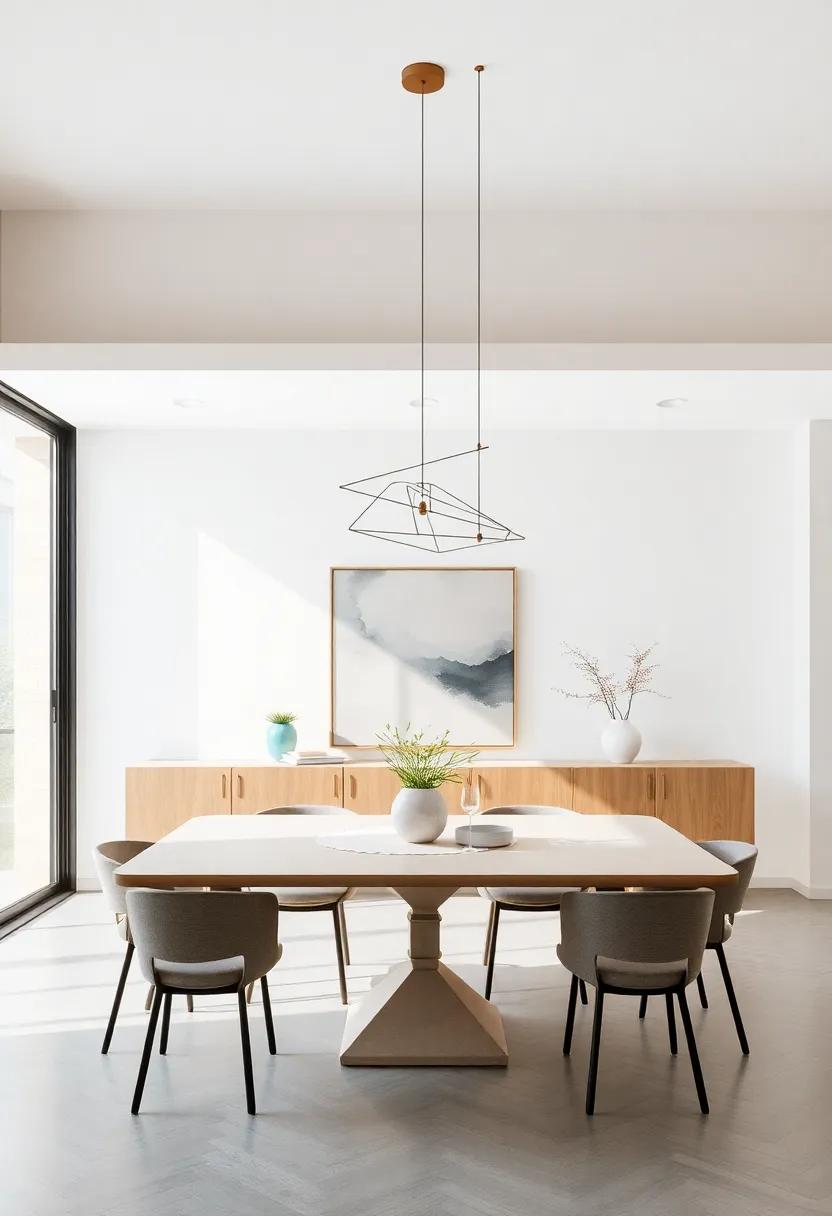
Achieving a seamless flow between dining spaces and adjacent areas is essential for enhancing the overall ambiance of modern living. An inviting dining room should resonate with the surrounding environments while maintaining its unique personality. To create this harmony, consider the following elements:
- Color Palette: Use a cohesive color scheme that links all areas, ensuring that the shades you select for the dining room complement those of adjacent spaces.
- Material Consistency: Incorporating similar materials,such as woods or metals across furniture and fixtures,strengthens the connection between spaces.
- Lighting Design: Implement integrated lighting solutions that unify the dining space with nearby areas, allowing for a consistent atmosphere.
When designing these interconnected spaces, consider experimenting with layout and flow.The arrangement of furniture should facilitate movement and enhance interaction while maintaining an aesthetic appeal. A well-structured layout ensures guests can easily transition from the dining area to adjacent living rooms or kitchens. Here’s a swift overview of layout ideas:
| Layout type | Description |
|---|---|
| Open concept | Minimizes barriers and encourages social interaction with free-flowing spaces. |
| Defined Zones | Uses area rugs or furniture arrangements to delineate dining from living areas. |
Nature-Inspired Elements: Bringing the Outdoors Inside Through Dining Room Design
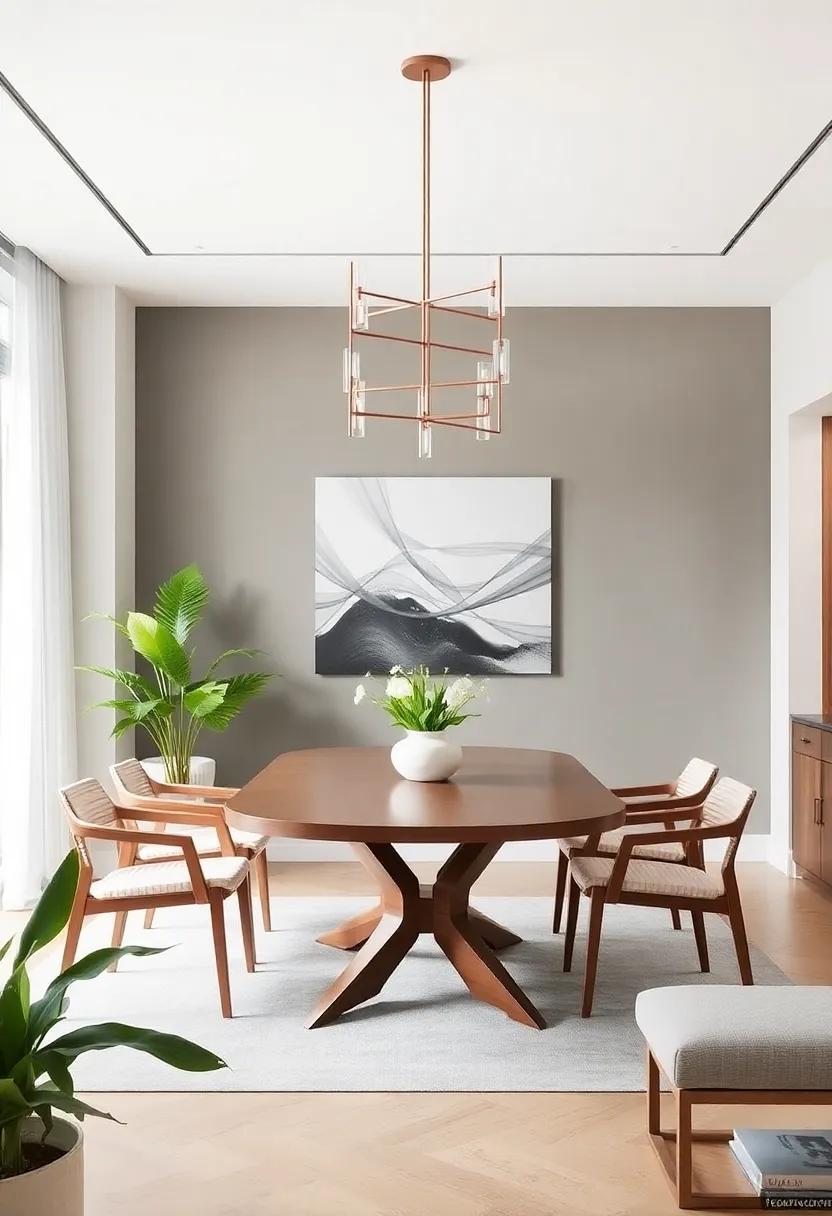
Incorporating elements from nature into your dining room not only enhances aesthetic appeal but also fosters a sense of tranquility and connection to the outdoors. Consider using materials that evoke the natural world, such as wood, stone, and metal. Rich,textured wood tables can become a centerpiece,while natural-stone accents—such as a slate table runner or marble coasters—add depth and sophistication. To further enhance this serene atmosphere, introduce greenery through potted plants or a vertical garden, creating a lush backdrop that invites the calming energy of nature inside.
Color palettes also play a pivotal role in achieving this harmonious blend. Earthy tones such as olive green, rusty orange, and soft taupe can be used to create a soothing ambiance. To give you an idea of how to blend these colors into your dining room, here’s a simple visual guide:
| Element | Suggested Color |
|---|---|
| Walls | Soft Taupe |
| Furniture | Natural Wood |
| Textiles | Olive Green |
| Accents | Rusty Orange |
Layering these colors through various textiles, such as table linens or cushions, and accentuating them with natural decor items—including driftwood centerpieces or ceramic pottery—can create a cohesive and inviting environment that breathes life into your dining space.
Cultural Influences: Infusing Global Styles into Your Contemporary Dining Room
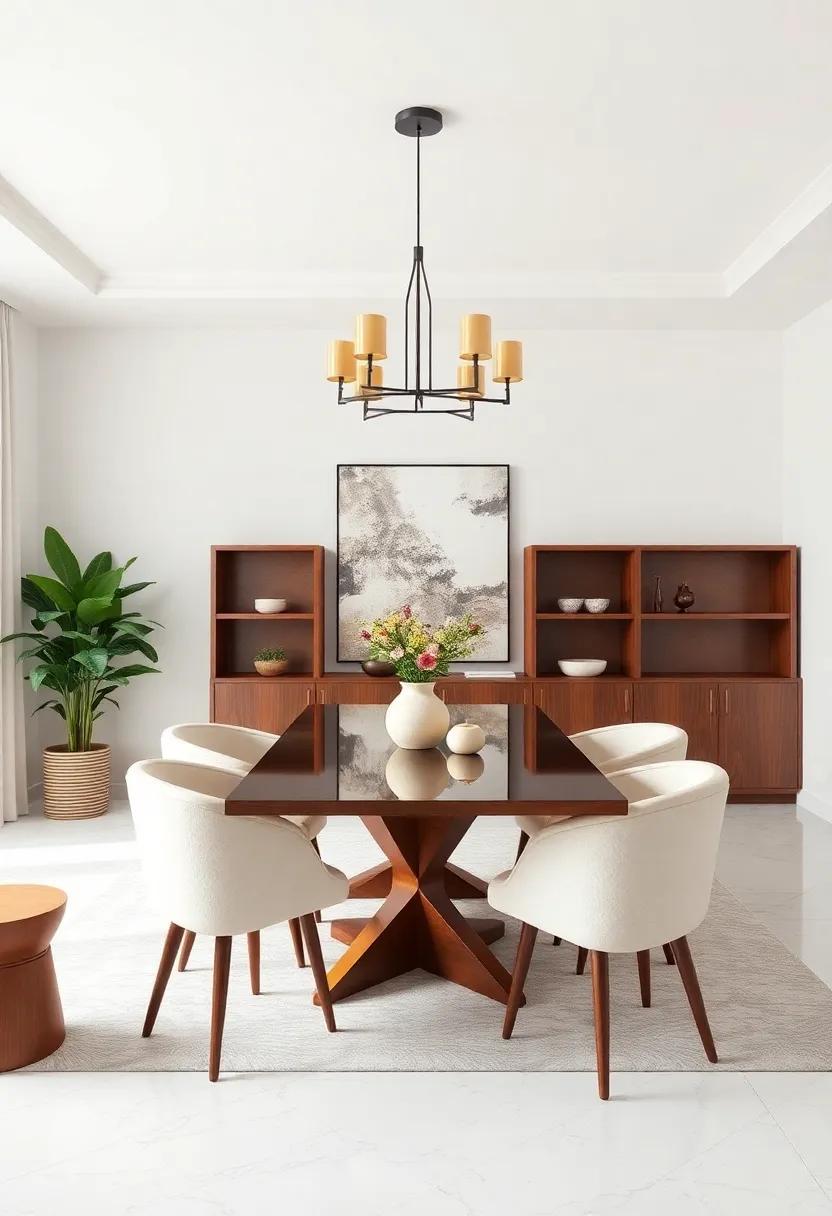
Integrating global styles into your dining room is a beautiful way to create a unique and inviting atmosphere that speaks to your personality and travels.start by considering a fusion of aesthetics that tell a story, such as combining Scandinavian minimalism with the vibrant hues of Moroccan decor. Elements like sleek Scandinavian furniture can serve as a base,enhanced with textured throws or handcrafted ceramics from far-off lands. This harmonious blend allows you to reflect your experiences while maintaining an elegant and modern feel.
To enrich your dining experience further, focus on key decorative elements that draw inspiration from various cultures. You might choose to:
- Incorporate textiles like a colorful Turkish rug or intricate Indian table runners that add warmth and character.
- Incorporate unique lighting by selecting fixtures with a hint of asian design, such as lantern-style chandeliers that create an inviting glow.
- Display global artifacts or artwork carefully curated from your travels, transforming your dining space into an art gallery while remaining functional.
Consider a simple table showcasing your key decor inspirations:
| Style | key Elements | Color Palette |
|---|---|---|
| Scandinavian | Minimal furniture, neutral tones | Whites, grays, light woods |
| Moroccan | Colorful tiles, ornate details | Terracotta, jewel tones |
| Asian | Lanterns, bamboo elements | Soft shades, rich darks |
Bold Patterns: Using Textiles and Wallpaper to Make a Statement in Dining Spaces

Transforming a dining space into a true statement piece can be accomplished through the vibrant use of textiles and wallpaper. Bold patterns can captivate the eye and bring an unexpected twist to the room, creating an inviting atmosphere for gatherings and intimate dinners alike. Consider incorporating the following elements to achieve this look:
- Statement Wallpaper: Choose large-scale floral or geometric designs to create a feature wall that draws attention immediately.
- Textured Fabrics: Utilize rich fabrics like velvet or brocade on upholstered dining chairs or window treatments to provide depth and culinary inspiration.
- Mix and Match: Don’t be afraid to combine different patterns; a striped tablecloth with a floral wallpaper can create a playful yet sophisticated vibe.
When selecting these elements, harmony is key. Aim for a balance between the boldness of the patterns and the color palette throughout the room. A cohesive look can be achieved by choosing complementary colors and maintaining a consistent theme. to visualize this, consider the following:
| Pattern Type | Color Scheme | Recommended Use |
|---|---|---|
| Geometric | Monochrome | Wallpaper feature wall |
| Floral | Pastel tones | Table linens |
| Abstract | Bold colors | accent cushions |
Sustainable Choices: Exploring Eco-Friendly Options for Modern Dining Room Furnishings
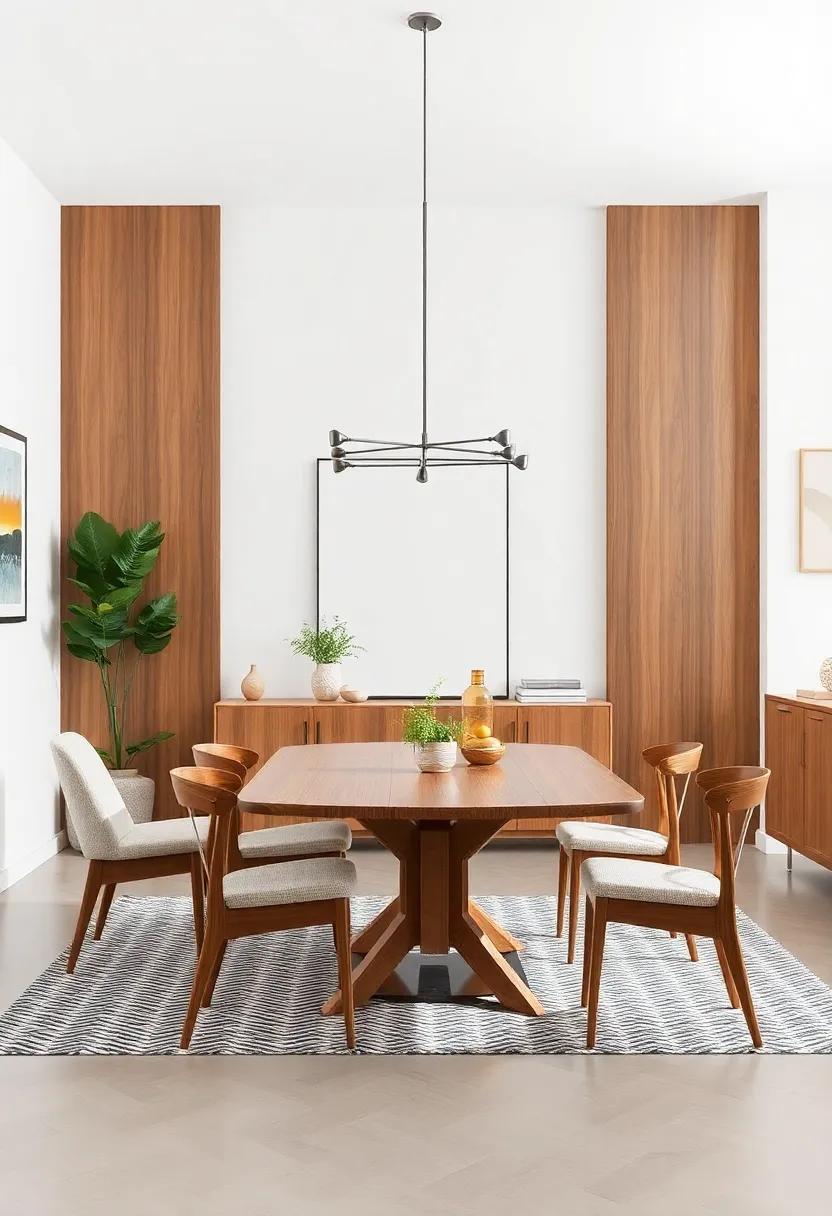
Incorporating eco-friendly options into modern dining room furnishings is not only a responsible choice but also a stylish one. Sustainable materials such as bamboo, reclaimed wood, and recycled metal are gaining traction for their durability and aesthetic appeal. Furniture designers are increasingly focused on creating pieces that beautify the home while taking care of the planet. when selecting your furnishings, consider the following sustainable choices:
- Bamboo Tables: Naturally fast-growing and renewable.
- Reclaimed Wood Chairs: Using salvaged timber reduces waste.
- Eco-Friendly Upholstery: Look for organic cotton or hemp materials.
- Recycled Metal Accents: Adds a modern twist with a low carbon footprint.
Another aspect to consider is the manufacturing process. Choosing brands that embrace ethical practices, such as fair wages for workers and low-impact production methods, ensures your dining room reflects your values. Here’s a glimpse of how certain materials stack up in terms of sustainability:
| Material | Renewability | Durability |
|---|---|---|
| Bamboo | High | Very Durable |
| Reclaimed wood | Medium | High |
| Recycled Metal | High | Very Durable |
Open Concept Living: The Connection Between dining Rooms and Overall Home Layout
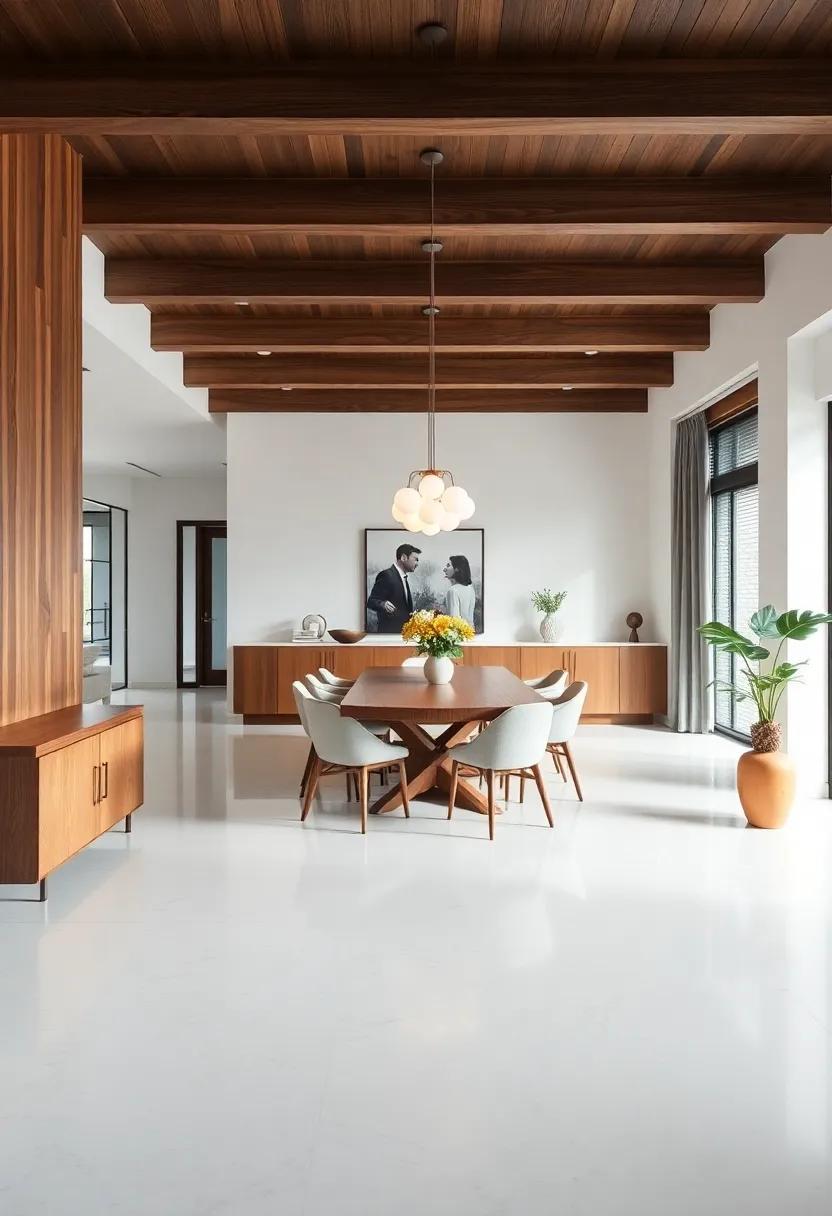
The allure of open concept living has become a defining characteristic of modern home design, seamlessly blending spaces to create harmonious environments. By allowing the dining room to flow into adjacent areas like the living room and kitchen, homeowners can foster a sense of connectivity. This design approach not only enhances natural light but also promotes social interactions, as family and guests can engage more freely across these open spaces. With a thoughtful selection of furnishings and decor, the dining area can become a focal point that complements and elevates the overall aesthetic of the home.
Choosing the right furnishings and layout for an open dining space is crucial. Consider the following elements:
- Color Palette: Harmonious colors can tie in the dining space with adjacent rooms.
- Furniture Arrangement: Circular tables can enhance flow, while rectangular ones can define spaces.
- Lighting Options: Statement chandeliers can serve as a bridge between the dining area and the living space.
These elements work together to create a cohesive environment that reflects your personal style while maximizing usability. A well-planned layout ensures that the dining room is not just a standalone area but an integral part of the home’s overall design narrative.
Seasonal Decor: Transforming Your Dining Room Aesthetic Throughout the Year
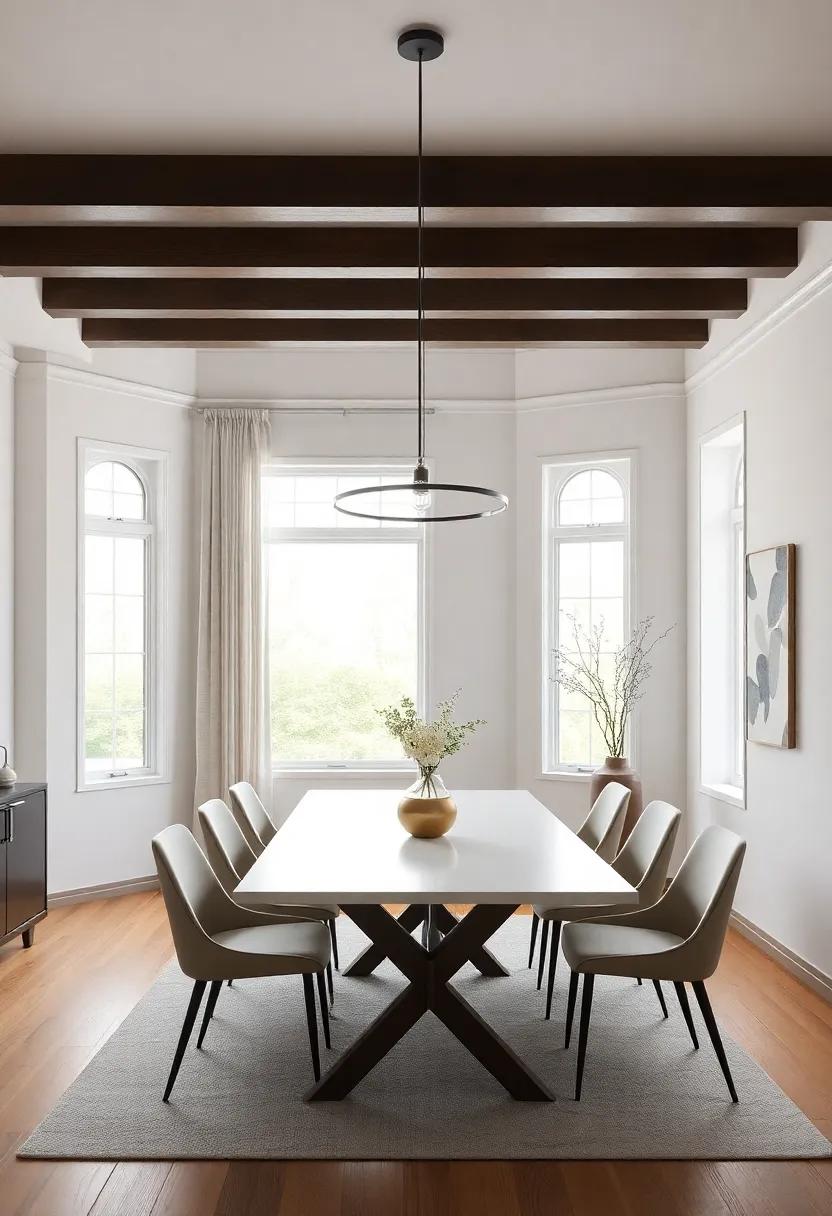
Embracing the changing seasons can breathe new life into your dining room and create an inviting atmosphere year-round. With simple yet creative touches, you can emphasize the beauty of each season through your decor choices. consider incorporating elements that resonate with the time of year, such as:
- Spring: Fresh flowers and pastel colors.
- Summer: Light linens and vibrant greenery.
- Autumn: Warm hues and rustic centerpieces.
- Winter: Cozy textiles and evergreen accents.
To elevate the aesthetic even further, think about adjusting your table settings and lighting. Your dinnerware can reflect seasonal themes, using motifs or shades that pop with the season’s spirit. an elegant centerpiece can draw attention, and why not mix textures, like polished metals with soft fabrics? Here’s a straightforward guide to adapt your dining decor seamlessly throughout the year:
| Season | Decor Tips |
|---|---|
| Spring | Incorporate floral arrangements and pastel tableware. |
| Summer | Use luminous tablecloths and incorporate fruits as décor. |
| Autumn | Opt for browns and oranges; add pumpkin or hay accents. |
| Winter | Choose deep jewel tones and use candles for warmth. |
Smart Technology: Integrating Modern Innovations for a Functional Dining Experience
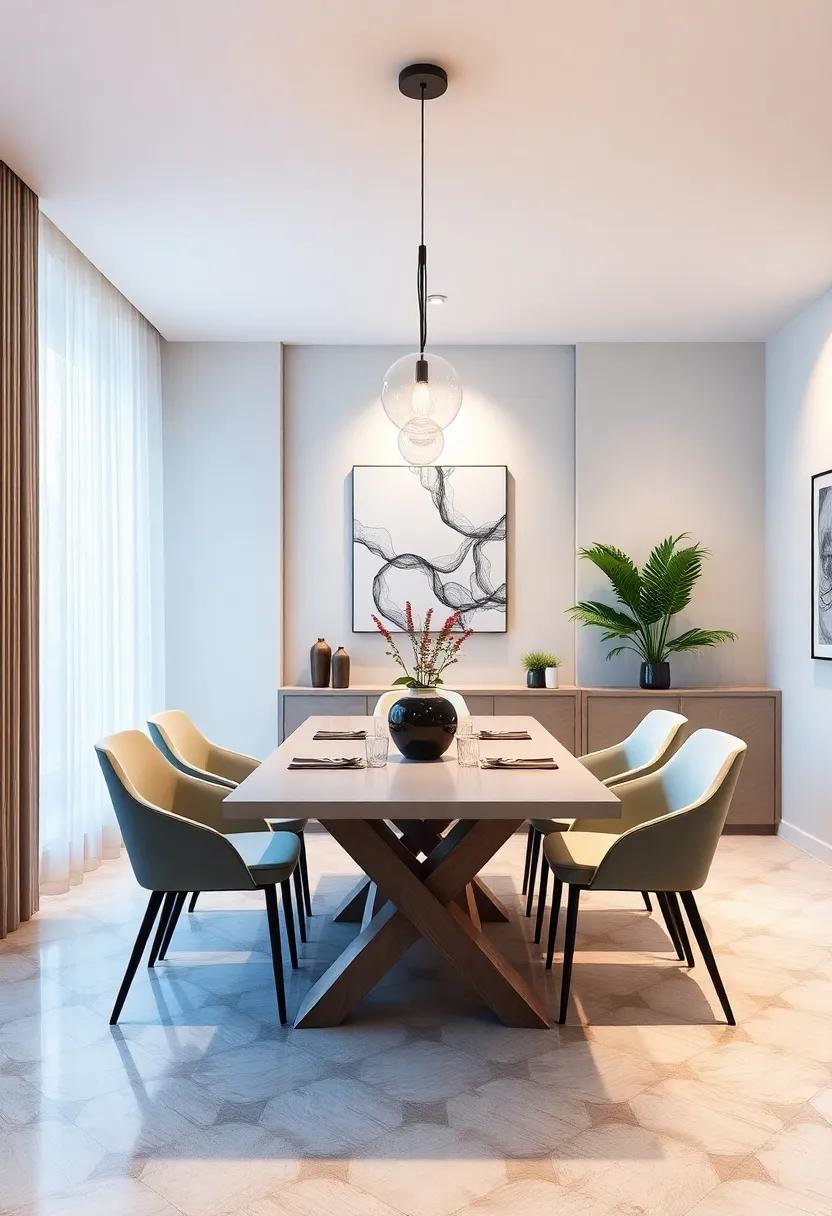
As the dining room evolves into a multifunctional space that blends aesthetics with technology, modern innovations are stepping in to elevate the dining experience. Today’s homeowners are integrating smart technology into their dining areas, enhancing not just the ambiance but also the overall functionality. Imagine dining under elegant ambient lighting that adjusts automatically based on the time of day, or using a smart speaker to control music or cooking timers seamlessly. These innovations craft an inviting atmosphere while simplifying the art of hosting.
When designing a contemporary dining room, consider incorporating the following smart features:
- Smart Lighting: Fixtures with adjustable hues and intensities for every occasion.
- Connected Appliances: Refrigerators that notify you of food expiration dates or smart ovens that can be preheated remotely.
- Integrated Sound Systems: Built-in speakers for an immersive dining experience that creates the perfect mood.
- Wireless Charging Stations: discreet outlets or tables that allow guests to charge their devices without clutter.
| Smart Technology | Functionality |
|---|---|
| Smart Dining Tables | Interactive surfaces with touch controls for menus and entertainment. |
| Smart Thermostats | Maintain optimal temperatures based on usage patterns. |
| Voice-Activated Assistants | Manage reservations, recipes, and reminders hands-free. |
Future Outlook
the journey through the realm of modern elegance in contemporary dining room styles reveals a world where functionality meets artistry, and tradition dances gracefully with innovation. As you curate your own space, remember that every choice—be it a sleek dining table, inviting chairs, or the perfect ambient lighting—plays a vital role in crafting an environment where memories are made and conversations flow effortlessly.Embrace the diverse aesthetics available, whether it’s the minimalist charm of Scandinavian designs, the bold statements of industrial elements, or the serene simplicity of mid-century influences. Each style invites a unique narrative, waiting to be personalized by your tastes and preferences.
Ultimately, your dining room is not just a space for meals; it is indeed a reflection of your identity and a canvas where life’s seasons unfold. So go forth, explore, and transform your dining experience into an exquisite harmony of elegance and individual flair. After all, in the art of dining, every detail counts, and every meal is a celebration waiting to happen.

